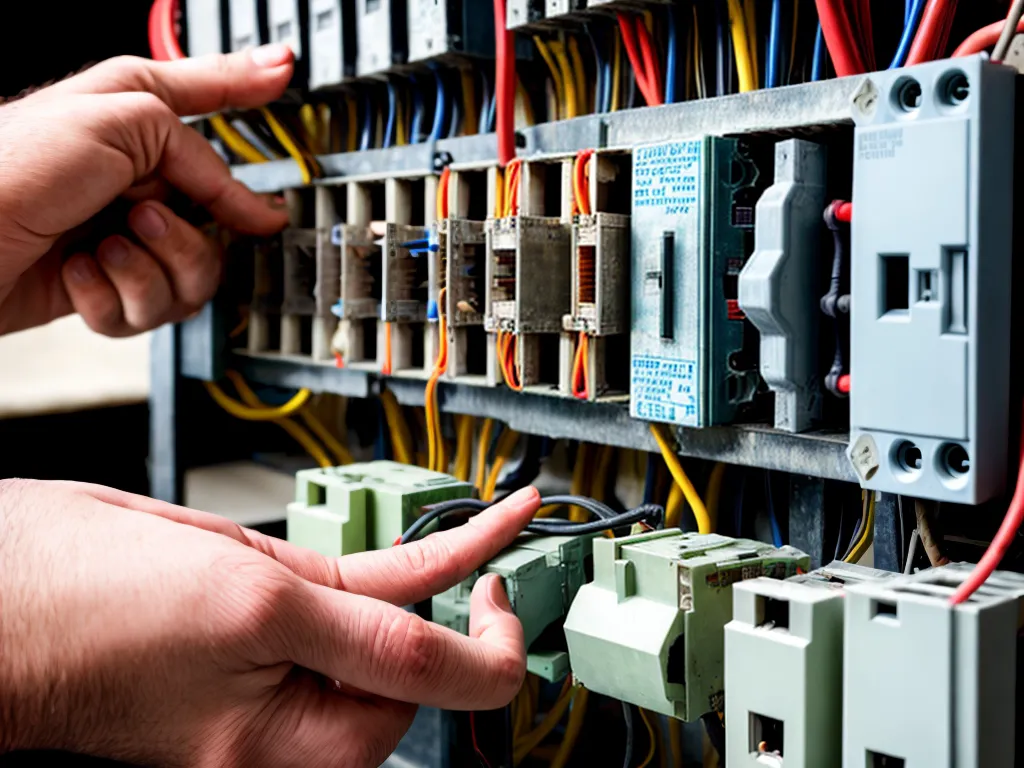
Introduction
Troubleshooting an old electrical panel with unlabeled circuits can be a daunting task. However, with the right preparation and step-by-step process, I can systematically identify each circuit and create a detailed labeling system. Proper labeling ensures safety, efficiency, and ease of use when working on or modifying the electrical system.
In this comprehensive guide, I will walk through all the key steps I take to troubleshoot unlabeled circuits, from gathering the necessary tools and safety equipment to mapping, testing, and clearly labeling each circuit. I share tips and examples from my experience troubleshooting antique panels in old houses and commercial buildings.
Gather Tools and Safety Equipment
Before touching any part of an unlabeled electrical panel, proper safety gear and testing tools are essential. I always arm myself with the following:
Safety Gear
- Electrical gloves - Protect hands from accidental shocks
- Safety glasses - Shield eyes from debris
- Non-conductive footwear - Rubber-soled shoes prevent accidental electrocution
- Headlamp - Frees up both hands for testing
Testing Tools
- Multimeter - Measures voltage, resistance, and current flow
- Outlet tester - Verifies correct wiring of outlets
- Circuit breaker finder - Identifies which breaker controls each circuit
- Non-contact voltage tester - Detects live voltage in wires and cables
- GFCI outlet tester - Checks for proper GFCI outlet functioning
- Phase rotation meter - Determines phase sequence for multi-wire branches
Other Essential Items
- Circuit directory template - For documenting and labeling circuits
- Marker, pen, tape - To clearly label components after testing
- Camera - Photograph panel layout before any changes
- Ladder - Safely access top parts of the panel
Thorough preparation with the right gear will ensure both my safety and efficient troubleshooting.
Mapping the Existing Circuits
Before I can identify unlabeled circuits, a clear understanding of the existing setup is crucial. I take time to thoroughly examine and map out:
- Main service panel - Note size, location, main disconnect, and number of branch circuits
- Subpanels - Check for additional distribution panels or fuse boxes
- Conduit and wiring - Follow conduits to see which circuits run where
- Outlets and fixtures - Make a preliminary list and describe all loads
I take detailed photos of the full panel and all wiring connections. This provides a baseline reference to ensure everything gets returned to its original setup.
Paying close attention to the physical layout upfront yields clues about potential circuit routes. I look for circuits that service common areas like bedrooms or the kitchen to start logically tracing wires.
Thorough mapping sets the stage for efficient hands-on troubleshooting next.
Testing and Labeling Each Circuit
With initial mapping complete, I can now safely test, identify, and clearly label each unlabeled circuit. I follow this standard procedure:
1. De-energize the Circuit
I turn off the breaker and verify power is cut using a non-contact voltage tester. De-energizing circuits protects me and equipment during the entire process.
2. Identify All Loads on the Circuit
I meticulously check every outlet and switch along the suspected path of the unlabeled wire. Lights, outlets, and hardwired appliances should lose power when the breaker is off. This reveals all the loads on that circuit.
3. Turn Breaker On and Retest
Once I believe I have found all the loads, I turn the breaker back on. Using my pen tester, I verify power is restored to all the same outlets and fixtures. This confirms they are all on the same circuit.
4. Apply Circuit Labels
With the circuit fully identified, I apply clear and consistent labels. I designate a simple name like "Kitchen Lights" and mark it on the breaker, inside the panel, and by all associated outlets.
5. Repeat for All Unidentified Circuits
I methodically repeat this full process for each unlabeled circuit in the panel. Taking the time to work through them one-by-one ensures every circuit gets identified and properly marked.
Verifying with an Outlet and Breaker Tester
For extra due diligence, I verify my panel labels using an outlet tester and circuit breaker finder.
The outlet tester confirms each outlet is wired correctly and on the expected circuit. I simply plug it into each outlet and check the indicator lights against my labeling.
A circuit breaker finder is a great backup check. I plug the transmitter into an outlet and the receiver flags me when I turn off the correct breaker. This definitively verifies which breaker controls that outlet.
These tests validate my troubleshooting and give me added peace of mind that all circuits are properly identified.
Maintaining a Detailed Circuit Directory
For ongoing safe use and future modifications, I maintain a detailed directory of all labeled circuits including:
- Circuit number
- Simple circuit name
- All outlets and fixtures on the circuit
- Location of fixtures the circuit serves
- Special notes like multi-wire branches
I store the directory prominently right next to the electrical panel for easy reference. Whenever I or a qualified electrician needs to quickly identify a circuit, this complete guide will save huge time and prevent confusion.
Summary
Unpacking old unlabeled electrical panels takes patience and care. But methodically mapping, testing, labeling, and documenting circuits ensures I work safely and leave the system organized for years to come.
Using the proper tools, precautions, and step-by-step process detailed above, I can systematically troubleshoot and understand even the most disorganized antique electrical panel. The peace of mind and optimization for future electrical work makes the effort well worthwhile.